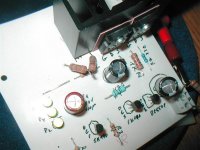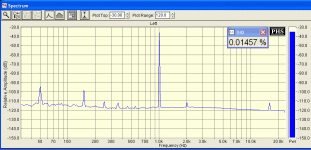So I fixed my shunt, or I should say all of the shunt regulators I built, since I built a few and all suffered of the same problem, that 60Hz ripple on the output. It was a grounding problem.
Just ran a separate ground to the regulator, go figure. 
Not it works as advertised, steady and ripple free voltage.
Code:
Before
wall trafo+rectifier+CLC filter shunt regulator phono pre
ground | | |
|-------------------|-------------------------------|--------------------|
After
wall trafo+rectifier+CLC filter shunt regulator phono pre
ground | | |
|-----------------------| | |
|-------------------------------------------------------|--------------------|Not it works as advertised, steady and ripple free voltage.
I am very happy with your success (Imagine whyikoflexer said:So I fixed my shunt, or I should say all of the shunt regulators I built, since I built a few and all suffered of the same problem, that 60Hz ripple on the output. It was a grounding problem.
Just ran a separate ground to the regulator, go figure.Code:Before wall trafo+rectifier+CLC filter shunt regulator phono pre ground | | | |-------------------|-------------------------------|--------------------| After wall trafo+rectifier+CLC filter shunt regulator phono pre ground | | | |-----------------------| | | |-------------------------------------------------------|--------------------|
Not it works as advertised, steady and ripple free voltage.
Star GND seems the way to go.
Ricardo
The only parts I've updated are the output caps. A batch of 1u NOS PIO Sprague caps arrived yesterday so they're being used now. Yes, some listening is going on now and the sound is very nice indeed. The only downside is, now that it works... I hate dealing with the enclosure, but it must be done.
Tantal resistors
Hi ikoflexer
I am very glad for your success and quite happy about the shunt I built using your layout.!!!
I am now waiting for Lee´s boards to build the RIAA.
In the end I will need an enclosure... that is the worst part (can I opt for a wodden case ?)
Just a small off topic reply:
Yesterday I replaced the cartridge resistor load to a tantalum resistor and the benefits are unbelievable... must run in a bit but I already have much better integration and overall detail.
Small details matter.
Ricardo
Hi ikoflexer
I am very glad for your success and quite happy about the shunt I built using your layout.!!!
I am now waiting for Lee´s boards to build the RIAA.
In the end I will need an enclosure... that is the worst part (can I opt for a wodden case ?)
Just a small off topic reply:
Yesterday I replaced the cartridge resistor load to a tantalum resistor and the benefits are unbelievable... must run in a bit but I already have much better integration and overall detail.
Small details matter.
Ricardo
Ricardo, that's great. I yet have to play with the loading resistor (I use no cap). The smaller size resistors will be replaced once I receive my order of evanohm wire and roll my own non-inductive resistors 
I'm also waiting for some russian PIOs and for this
http://cgi.ebay.ca/FT-3-Hi-END-Teflon-Capacitors-0-1uF-600V-5-NEW-2-pcs_W0QQitemZ390028694477QQcmdZViewItemQQptZBI_Electronic_Components?hash=item390028694477&_trksid=p3286.c0.m14&_trkparms=72%3A1215|66%3A2|65%3A12|39%3A1|240%3A1318
which ends up for me being a bit more than 5USD per teflon cap... not too shabby. I haven't dealt with this vendor before, but he's got 100% feedback, so, we'll see (free shipping not bad).
All in all, it's looking good. Ricardo, what value loading resistor have you used, in the end? (I know it's cartridge specific, I'm just asking if you've done any experimenting or what?)
Salas, I'll second the idea of metal enclosure, even when a wooden case is used, best to have the circuit enclosed in metal. Sometimes I use the shielding you can find in old CRT computer displays. They have a very easily cut metal shield usually, and that is an effective rfi shield. People throw old monitors by the tons. In fact I get quite a lot of parts out of those old monsters, such as high voltage caps, the ferrite core of the high voltage trafo, etc. I find the ferrite core nice and big for rolling your own coils/chokes. Saving the planet one monitor at a time
I'm also waiting for some russian PIOs and for this
http://cgi.ebay.ca/FT-3-Hi-END-Teflon-Capacitors-0-1uF-600V-5-NEW-2-pcs_W0QQitemZ390028694477QQcmdZViewItemQQptZBI_Electronic_Components?hash=item390028694477&_trksid=p3286.c0.m14&_trkparms=72%3A1215|66%3A2|65%3A12|39%3A1|240%3A1318
which ends up for me being a bit more than 5USD per teflon cap... not too shabby. I haven't dealt with this vendor before, but he's got 100% feedback, so, we'll see (free shipping not bad).
All in all, it's looking good. Ricardo, what value loading resistor have you used, in the end? (I know it's cartridge specific, I'm just asking if you've done any experimenting or what?)
Salas, I'll second the idea of metal enclosure, even when a wooden case is used, best to have the circuit enclosed in metal. Sometimes I use the shielding you can find in old CRT computer displays. They have a very easily cut metal shield usually, and that is an effective rfi shield. People throw old monitors by the tons. In fact I get quite a lot of parts out of those old monsters, such as high voltage caps, the ferrite core of the high voltage trafo, etc. I find the ferrite core nice and big for rolling your own coils/chokes. Saving the planet one monitor at a time

Ok so metal it will be.
I experimented with several resistor values, 460r, 1k, 10k, 27k, 37k, and settled for 39k tantalum... I believe it is not a Shinkoh... got it from HiFi Collective without any lettering.
Regarding the cap, I experimented with silver micas, 500p, 220p, 120p and settled for no cap at all.
Seems that the Benz ACE likes lighter loads and no cap to produce a big sounstage.
The higher loads produce tighter bass but lacks ambience and trebble detail and attack.
Ricardo
I experimented with several resistor values, 460r, 1k, 10k, 27k, 37k, and settled for 39k tantalum... I believe it is not a Shinkoh... got it from HiFi Collective without any lettering.
Regarding the cap, I experimented with silver micas, 500p, 220p, 120p and settled for no cap at all.
Seems that the Benz ACE likes lighter loads and no cap to produce a big sounstage.
The higher loads produce tighter bass but lacks ambience and trebble detail and attack.
Ricardo
I was listening to the Benz Ace Red today. We settled for 510R as input load. For now its a Dale, and because we fixed the value, it is going to be a Shinkoh too as almost all the others that you see in the pictures (the color coded ones). This nice build has begun to show its teeth, it will open up more, its very fresh now, very low on hours. At the moment, it digs deeper for right tone detail and breaths far easier, its more expansive, and separates the orchestrations very noticeably better than the previous just very good builds for parts and voicing care. The question that this new build was made to answer, was if this RIAA pays off some careful voicing with parts, double PSUS, and general extra care. The answer is, yes! By all means. The general resolution goes up very noticeably.

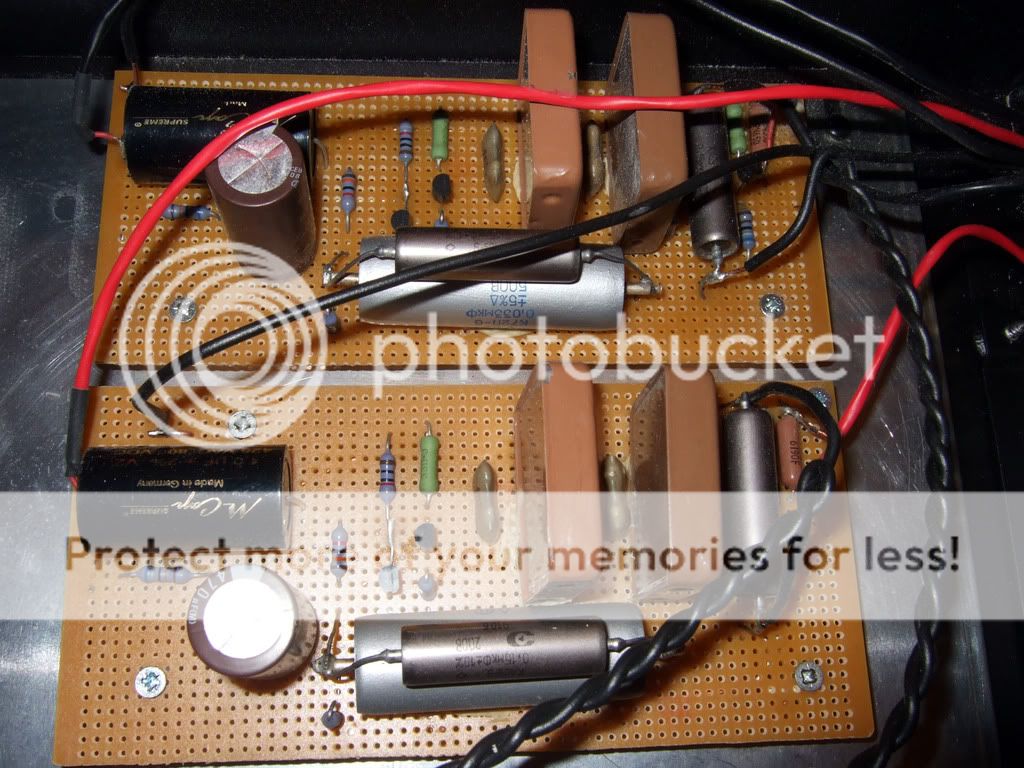
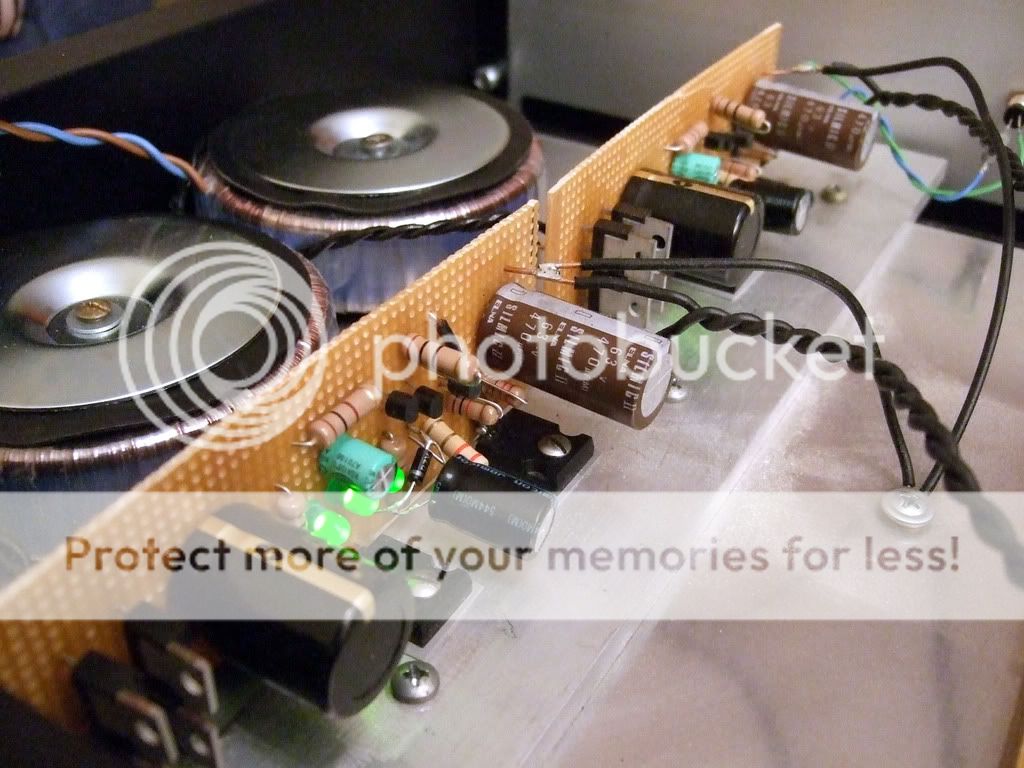
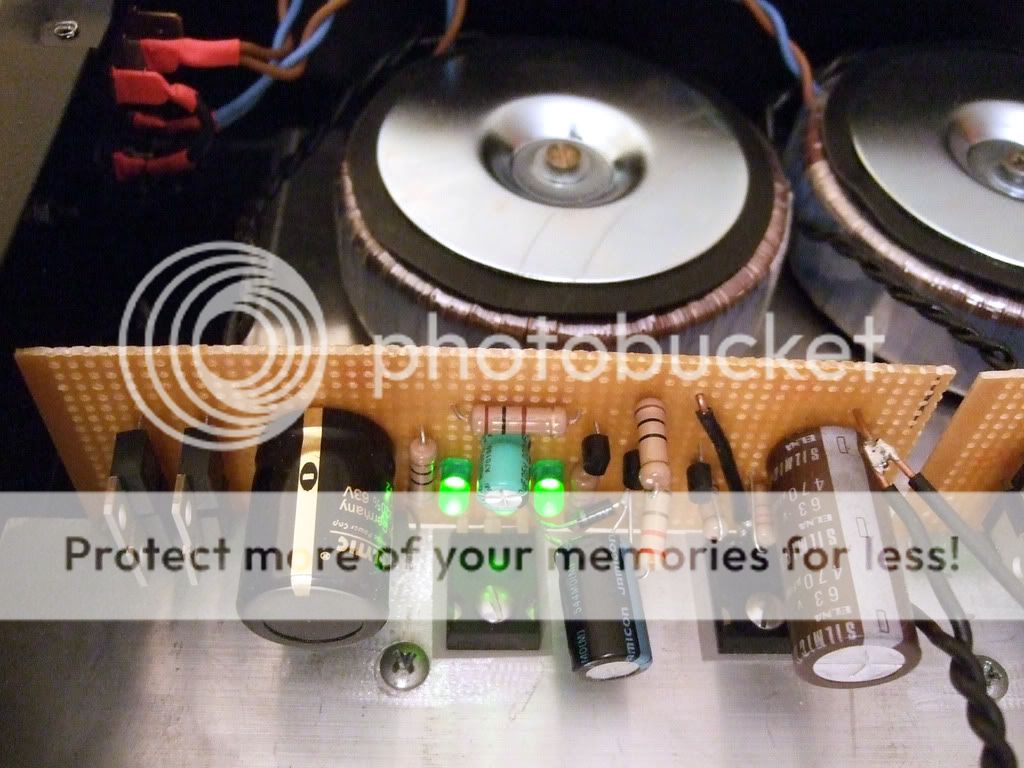
I have found the right settings for my new Emu Tracker Pre fast, thanks to the help of the solid state section guys.
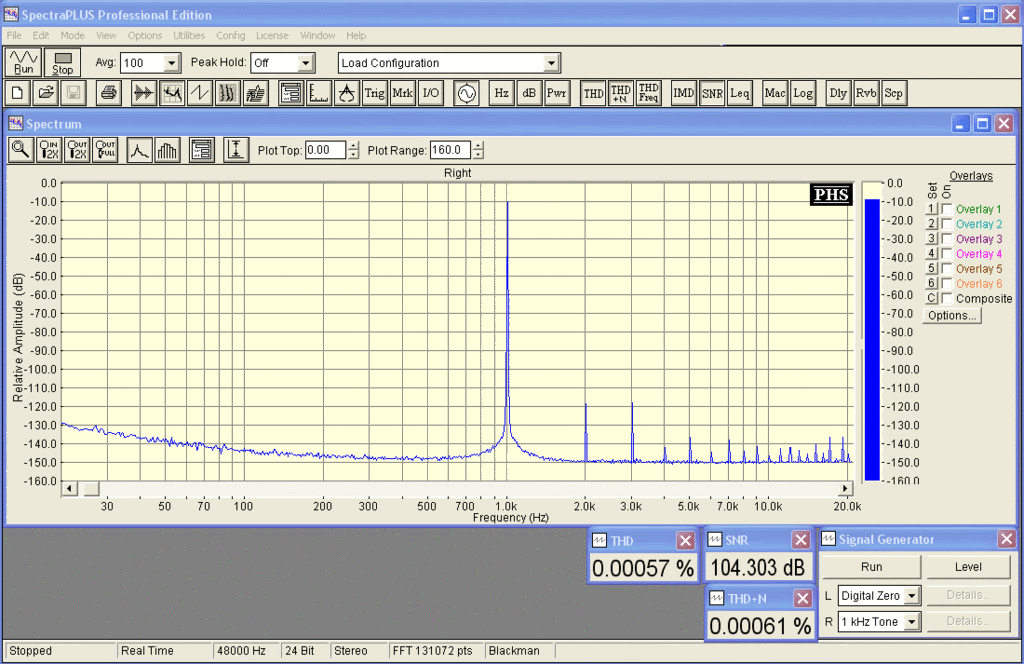
Confident for my noise floor and THD limits now, I measured this RIAA build. -106.79dB noise (hiss) from 5kHz to 20kHz for 0.5mV input, and 0.024% THD. 100Hz buzz is absent. Gain=56dB @ 1kHz. I also created a reference RIAA curve, measured the two channels, and superimposed them on the red ref. That would show deviation from Riaa or channel gain imbalance. This phono's gain is not fixed by some loop feedback ratio, remember. The curves could not be distinguished from the reference visually when superimposed on it. So I just post the reference.
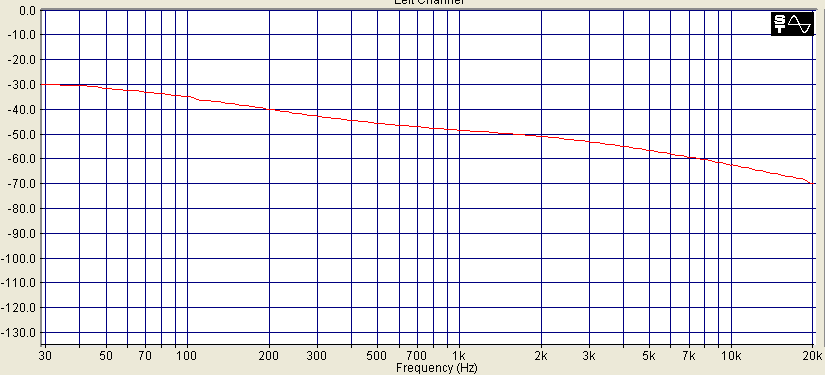




I have found the right settings for my new Emu Tracker Pre fast, thanks to the help of the solid state section guys.

Confident for my noise floor and THD limits now, I measured this RIAA build. -106.79dB noise (hiss) from 5kHz to 20kHz for 0.5mV input, and 0.024% THD. 100Hz buzz is absent. Gain=56dB @ 1kHz. I also created a reference RIAA curve, measured the two channels, and superimposed them on the red ref. That would show deviation from Riaa or channel gain imbalance. This phono's gain is not fixed by some loop feedback ratio, remember. The curves could not be distinguished from the reference visually when superimposed on it. So I just post the reference.

Hi Salas
I believe the double mono layout must be very rewarding. I will build my rig with only one shunt (due to cost avoidance issues) and maybe upgrade in the future.
Just received my RIAA pcb from Lee. Wonderfull layout
The two channels are etched in the same pcb, sharing a common GND. Can I use it as is or should I separate the GND ?
Now I must figure out how to match the jfets using only a low cost DMM.... can you please help ?
Regards
Ricardo
I believe the double mono layout must be very rewarding. I will build my rig with only one shunt (due to cost avoidance issues) and maybe upgrade in the future.
Just received my RIAA pcb from Lee. Wonderfull layout

The two channels are etched in the same pcb, sharing a common GND. Can I use it as is or should I separate the GND ?
Now I must figure out how to match the jfets using only a low cost DMM.... can you please help ?
Regards
Ricardo
Everything adds. Parts quality, bigger better transformers, care, GND, double regs, etc. Synergistic traits of parts and voicing takes experimentation and patience as you know.
Nice that you finally got your PCB. I would try it as it is for GND if its quiet and free of buzzing ground loops with one shunt, and after being very familiar and everything is OK with broken in favorite parts and general tone in the particular system maybe I would experiment with double shunt and separated GNDs.
You just need your DMM, have some crocodile clip wires of different color and a 9V battery. Then read this liitle thread. Happy building and voicing!
Happy building and voicing!
Nice that you finally got your PCB. I would try it as it is for GND if its quiet and free of buzzing ground loops with one shunt, and after being very familiar and everything is OK with broken in favorite parts and general tone in the particular system maybe I would experiment with double shunt and separated GNDs.
You just need your DMM, have some crocodile clip wires of different color and a 9V battery. Then read this liitle thread.
And another FFT from my high MC 44dB no cascode no buffer version that I use for my Denon 160. It is not exponential but RTA so to keep up better for Riaa and be more realistic higher up. Else, the noise floor goes down to -135dB in the highs. That is with SpectraPlus and Emu TP at 48k 24 bit. Alas, when the needle will hit the vinyl, you know the story...At least the circuit won't add any own noise nasties above, as it lurks far below from what a rock dragging on vinyl can do. Also, bye bye 100Hz ripple! Shuntie rocks.
P.S. That last octave spike isn't there with some other sampling modes and FFT lengths or software, must be some digital artifact. Whatever it is, at -113dB, let it be! What? -95dB 50Hz hum in a tiny phono box with a toroidal at 15cm distance from tiny signals? Must do something about that lousy GND.
What? -95dB 50Hz hum in a tiny phono box with a toroidal at 15cm distance from tiny signals? Must do something about that lousy GND.
P.S. That last octave spike isn't there with some other sampling modes and FFT lengths or software, must be some digital artifact. Whatever it is, at -113dB, let it be!
 What? -95dB 50Hz hum in a tiny phono box with a toroidal at 15cm distance from tiny signals? Must do something about that lousy GND.
What? -95dB 50Hz hum in a tiny phono box with a toroidal at 15cm distance from tiny signals? Must do something about that lousy GND.
Attachments
At 48k it gives better THD card residual. But at 192k you get 96k bandwidth so you can see for oscillations higher etc. Especially useful for compensating loop feedback amps, etc. It stays always below 0.000 THD anyway with the drivers and softs set right. There are many ways to manipulate the software's FFT lengths, the sampling, the windowing. If you get cheaper, make sure it is still an EMU. The card THD is level dependent also. Flat top windowing helps at that. But circuits show different THD at different levels naturally as well. For instance the non buffered 44dB would jump at 0.025% with 2mV input instead of 0.5mV (I kept it at that so to be comparable with the 56dB one measurements), and would still go 0.06% with 44.1kHz 16 bit, when the buffered 56dB would do 0.035% there. So without 24bit, you won't know that your circuit naturally is 0.035% less than with what 44/16 shows. 24 bit is nearer to truth. Off course we are not researchers, but is good to know what really happens. We earthed the mains on box in that big one with the double shunts, and we gained 3dB better hum, but only at 24bit we saw that the THD lessened a bit as well, for instance.
Hi Salassalas said:
OK, here you are.
I will use this schematic to start with.
http://www.diyaudio.com/forums/showthread.php?postid=1658735#post1658735
As I can not find the transistor BC550BP.... can I use BC550C for Q3 ?
Ricardo
- Home
- Source & Line
- Analogue Source
- Simplistic NJFET RIAA
